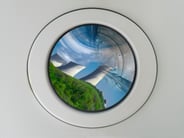The European Council has adopted a position on the Green Claims Directive. This is a positive move in the battle against greenwashing and has implications for all businesses.
In June 2024, the European Council published its general approach for directive 2023/0085, popularly known as the Green Claims Directive. (The general approach provides the basis for fine-tuning the final version of the directive.) Directive 2023/0085 focuses on cleaning up the claims that businesses make about the environmental merits of their products. Wording such as “eco-friendly” or “kind to the planet” will have to be backed up by clear evidence.
There has been lobbying to water down the rules, but the general approach maintains the important principle of ex ante verification. This means that businesses have to get any green claims verified by a third party before making them public. (Some claims may be able to skip third-party verification if they complete a technical document that satisfies the authorities.)
Climate claims need evidence
ICarbon offsetting is an important front in the battle against greenwashing. There are two big problems here: the quality and the way they are used.
Last year’s investigation into Verra, the world’s leading certifier, found that many of the offsets approved were actually worthless “phantom credits”. There are serious doubts over how what level of carbon emissions is truly actually being absorbed or avoided through any given offset.
The other issue is businesses using carbon offsets as an early step in their carbon reduction strategy because they represent a quick win. Independent authorities like the UK’s Climate Change Committee are clear that offsetting should be reserved for the hardest-to-abate emissions when other avenues are exhausted. It should not be a substitute for doing the real work on reducing emissions.
The general approach to the Green Claims Directive reflects the need to use offsets responsibly. It requires any companies making green claims on the basis of offsets to prove that they have a net-zero target and are making progress towards it. They also need to publish the percentage of their total greenhouse gas emissions that have been offset. 
Changing landscape
The Green Claims Directive is part of a bigger move from the EU towards greater transparency on everything to do with a company’s sustainability credentials. (We wrote in February about the complementary directive on empowering consumers to make greener choices.)
The UK is on a similar path. For example, anti-greenwashing rules for financial services came into force at the end of May and we can expect similar changes in other sectors. The legislative changes go hand in hand with a growing consumer appetite for transparency.
All this means that claims such as “powered by 100% renewable energy” could soon be contentious. We know that 24/7 clean energy isn’t possible – yet – so when your business claims to be running on it, you are open to accusations of greenwash.
The only way to stay ahead of the changing landscape is to verify your own claims. For purchased energy, this means gathering data on exactly how much renewable power your business uses. We suggest giving the Matcher a try. It tracks the proportion of renewable energy coming from the grid at any given time (in half-hourly intervals) and matches it to your company’s consumption patterns. This tells you exactly how much renewable energy you’re really using; we call it your Clean Energy Score. This is a number you can share in your reporting and marketing, safe in the knowledge that it is backed up by real evidence.
To try out the Matcher and see how it can protect your business from reputational risk, get in touch for a demonstration.



